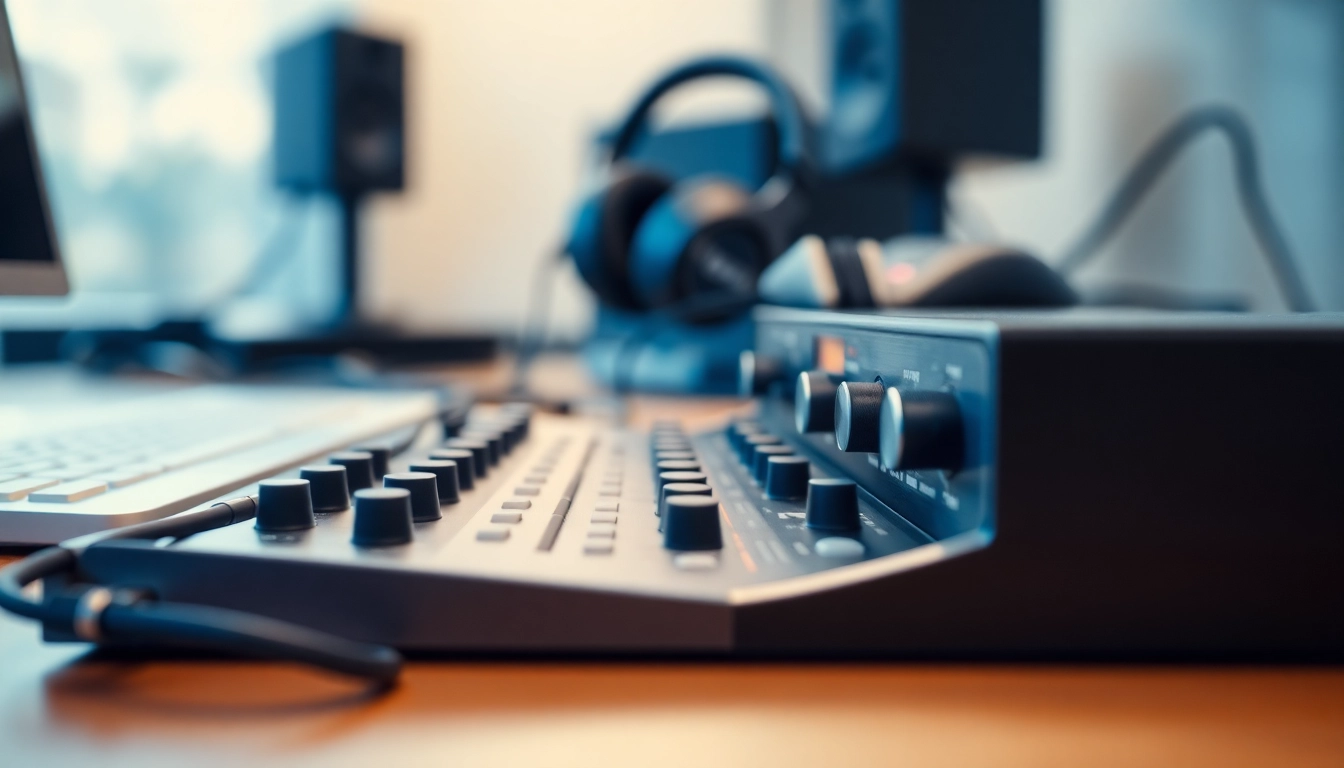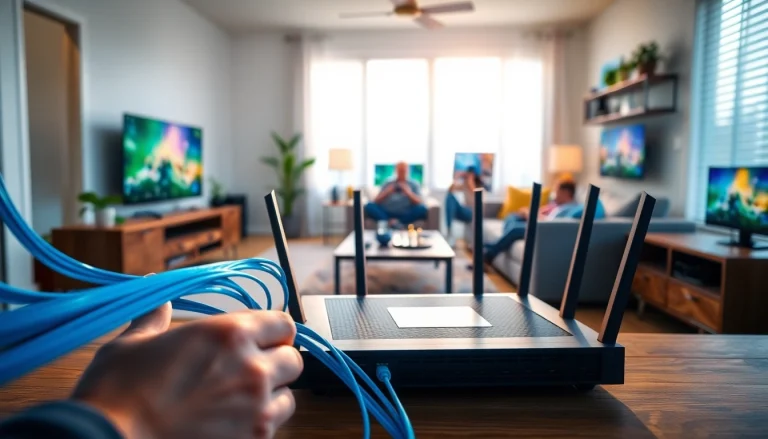The Evolution of Music Hardware
Historical Context of Music Players
The journey of music hardware spans several decades and reflects the rapid advancement of technology and changes in consumer preferences. From the introduction of vinyl records and cassette tapes to the digital revolution that brought about MP3 players, the music listening experience has continually evolved. Each leap in technology transformed not only how consumers accessed music but also how they interacted with it. Early music players, such as gramophones, required physical media, while modern devices incorporate complex software ecosystems and internet connectivity, showcasing a significant transition from mechanical to digital formats.
Technological Advances in Audio Hardware
Technological advancements have played a crucial role in the development of audio hardware. The transition from analog to digital audio was a game-changer that introduced higher fidelity, better compression codecs, and more portable playback options. Devices like the portable CD player opened the door to mobility in the late 20th century, while later models of MP3 players shifted consumers toward a more accessible and compact form of music consumption. Notably, components such as DACs (Digital-to-Analog Converters) and modern Bluetooth technology have enhanced sound quality and convenience. Innovations such as active noise cancellation and immersive audio environments push the boundaries of how we enjoy music today.
Consumer Preferences and Market Trends
Understanding consumer preferences is vital to grasping the evolution of music hardware. In recent years, there has been a notable shift towards devices that offer streaming capabilities, aligning with accessibility and convenience. The rise of music subscription services has transformed the way people collect and consume music—many now prefer having a plethora of songs at their fingertips rather than owning physical media. This change has resulted in a growing demand for devices that seamlessly integrate with streaming platforms, ensuring playback is simple and user-friendly. Furthermore, consumers increasingly seek devices that offer superior battery life, modular components, and compatibility with smart home systems.
Understanding Features of Modern Music Hardware
Key Specifications to Look For
When selecting modern music hardware, several specifications warrant careful consideration. Key aspects include:
- Sound Quality: Look for specifications such as frequency response and Total Harmonic Distortion (THD) to ensure an immersive listening experience.
- Storage Capacity: Many devices now offer substantial internal storage or support for external memory cards to hold vast music libraries.
- Battery Life: Long battery life is essential for portable music devices, with many models now offering 20 hours or more on a single charge.
- Connectivity Options: Ensure the device supports multiple connectivity options, including Bluetooth, USB, and possibly Wi-Fi for streaming capabilities.
- Usability Features: Touch-screen controls, customizable playlists, and intuitive interfaces make interacting with the hardware simpler.
Comparative Analysis of Features
Comparative analysis of different music hardware features can reveal which device is best suited to individual needs. For instance, a music player designed for audiophiles might prioritize superior sound quality through advanced DACs and headphone outputs, whereas a more streamlined, portable music player may focus on lightweight design and battery efficiency. By assessing devices across various dimensions—be it sound reproduction, storage, or unique features—consumers can make informed choices tailored to their particular listening habits. It is beneficial to read various reviews and user experiences to better understand how different models perform in real-world conditions.
How to Choose Based on Your Needs
Choosing the right music hardware involves evaluating personal requirements and usage scenarios. If you are an active individual, lightweight devices with streaming capabilities may fit best. Alternatively, if you are a casual listener who values sound quality over portability, investing in a high-fidelity audio player might be worthwhile. Additionally, assess where and how you will use the device. For home use, larger speakers or integrated home systems can enhance the experience, while small portable players are ideal for travel. Conducting a needs assessment is key and can help narrow down your choices effectively.
Integrating Music Hardware with Digital Platforms
Compatibility with Streaming Services
As the music industry has evolved towards digital streaming platforms, compatibility with these services has become essential for music hardware. Most modern devices now offer integration with popular streaming services, allowing users to access vast libraries of music effortlessly. The integration generally requires stable internet connectivity and may support features like offline listening, enabling users to download music for later playback. Additionally, seamless pairing between devices, such as smartphones and music players, enhances user experience by allowing easy synchronization of playlists and media libraries.
Best Practices for Synching and Using Devices
Maximizing the potential of your music hardware involves adopting best practices for synchronization and usage. Regularly update the software and firmware of your devices to ensure optimal performance and security. Utilize user manuals for understanding device functions fully, and explore features like playlists, genres, or mood-based recommendations to enhance listening experiences. Moreover, backing up data regularly, especially music libraries, is vital in preventing loss. Utilizing cloud services for backups allows you to access your library across different devices without strain.
User Experience Enhancements
Enhancements in user experience are a focal point in the evolution of music hardware. Touchscreen controls, customizable interfaces, and personalized playlists create an engaging environment. Moreover, implementing voice command features enables hands-free control, which is particularly beneficial for users who are on-the-go. Many modern devices also recommend music based on listening habits, creating a personalized experience over time. User reviews and feedback play a pivotal role in guiding manufacturers toward improving hardware and software, ensuring that features align with consumer needs and expectations.
Maintenance and Care for Your Music Hardware
Essential Cleaning and Maintenance Tips
Proper maintenance of music hardware not only extends its lifespan but also preserves sound quality. Regular cleaning of devices, particularly speakers and earphones, prevents the accumulation of dust and debris that can influence audio output. Use a microfiber cloth for surfaces, and consider gentle cleaning solutions for stubborn spots. When it comes to headphones and earbuds, ensure you clean the ear tips to maintain hygiene and performance. Additionally, check cables and connectors regularly for wear and tear to avoid audio interruptions.
Storage Solutions to Prolong Lifespan
Proper storage is vital for the longevity of your music hardware. Avoid exposing devices to extreme temperatures or humidity, as these factors can damage internal components. Store devices in protective cases when not in use, and keep them away from direct sunlight. It’s also wise to store your music hardware in a dedicated drawer or shelf where it can remain undisturbed and protected from accidental damage. Furthermore, frequent use of your devices helps maintain battery health; follow manufacturer guidelines on charging to prolong battery life.
Common Issues and Troubleshooting
Despite advancements in technology, common issues can still arise in music hardware. From connectivity glitches to software malfunctions, troubleshooting skills are essential. For connectivity issues, ensure your device is within the operational range of the network or device it connects to. Restarting the device often resolves temporary software glitches. If sound quality issues persist, check your connections and ensure that all audio settings are adjusted correctly. Most devices come with user manuals that offer troubleshooting sections designed to guide users in resolving common problems effectively.
Future Trends in Music Hardware Technology
Emerging Technologies Shaping Music Consumption
The future of music hardware technology is continually being shaped by emerging trends. Improvements in AI are leading to devices that can adapt to user preferences, learning habits, and even creating personalized playlists based on listening behaviors. Augmented reality (AR) is poised to revolutionize concerts and live music experiences, offering immersive ways to engage with performers and other fans. Additionally, the integration of smart technology into music hardware means devices can remain in sync, create seamless multi-room audio experiences, and provide voice-activated controls.
The Role of AI and Smart Features
Artificial Intelligence is increasingly becoming integrated into music hardware, enhancing the way consumers interact with their devices. Smart features can analyze user data to offer tailored recommendations or adapt sound profiles to suit different environments. For example, AI-driven equalizers can automatically adjust sound settings based on the environment or user preferences. This intelligent interactivity suggests an animated future for music consumption, where hardware utilizes machine learning to transform average listening into a personalized sensory experience.
Anticipating Changes in User Behavior
As technology evolves, user behavior will likely shift accordingly. The inclination for on-the-go access to music will deepen, prompting a demand for even more compact and functional hardware solutions. Enhanced security and privacy measures will become increasingly important as users engage with streaming services and smart features. As younger generations grow accustomed to digital interactions, the demand for user-friendly interfaces and seamless connectivity will shape product development. By staying attuned to these changes, manufacturers can anticipate consumer needs and innovate accordingly. For now, https://hardwareplayer.com remains a vital resource for those seeking premium music hardware solutions.








